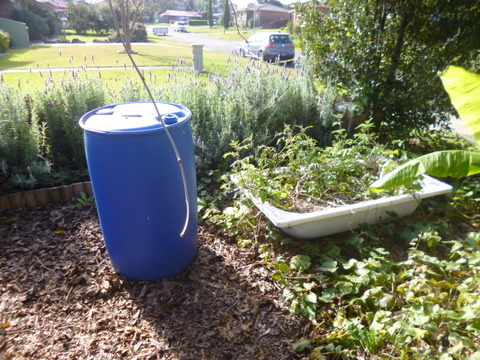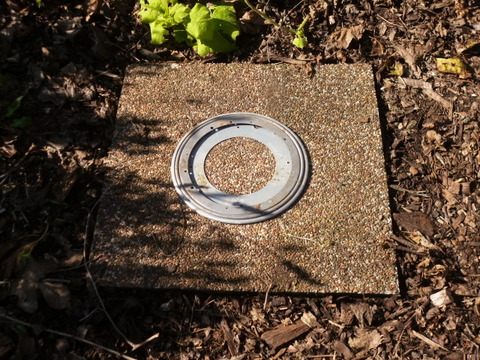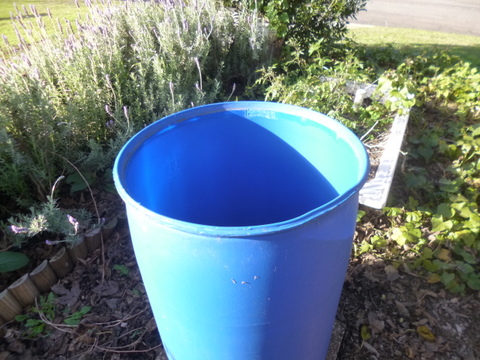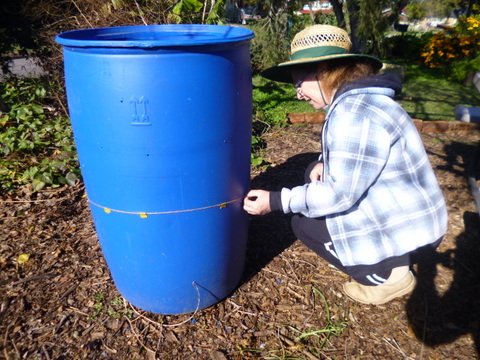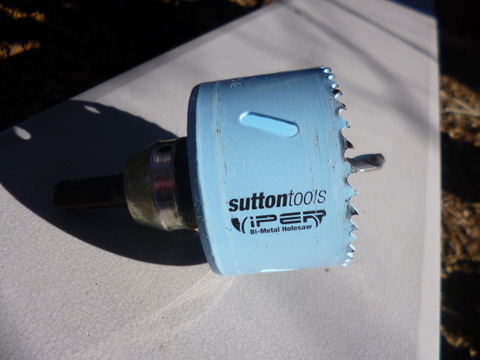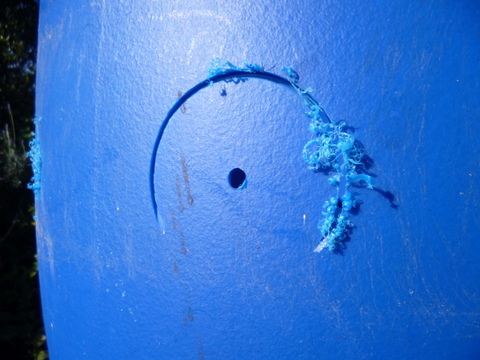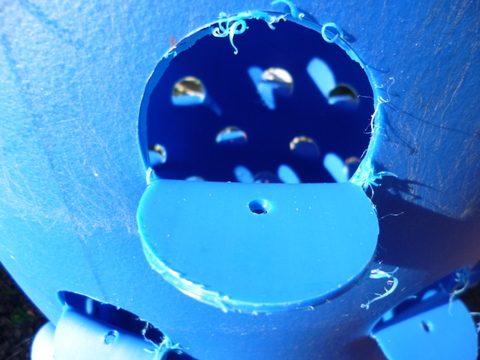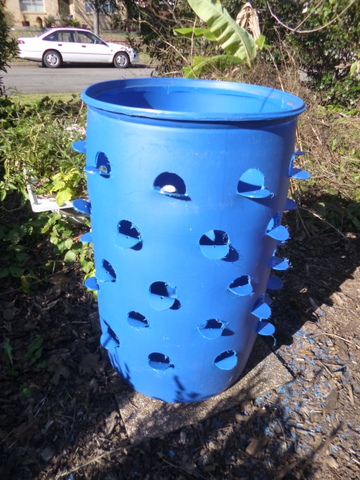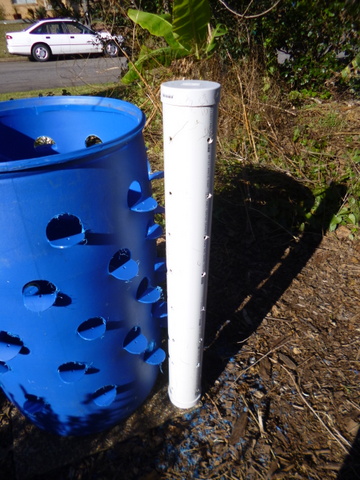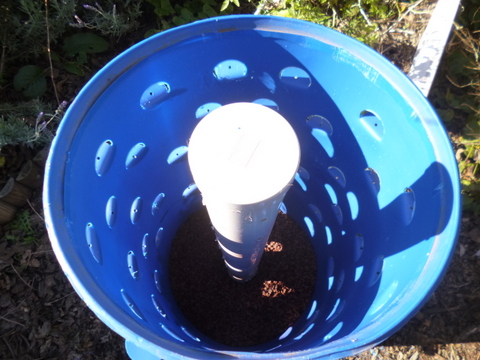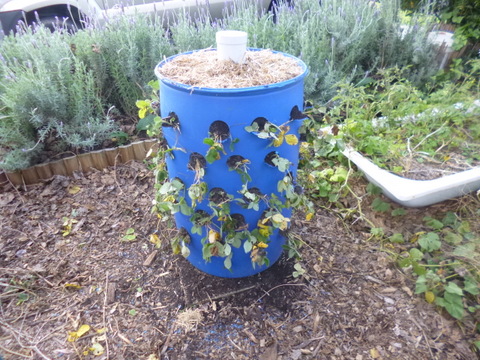Unless you live on acres, there never seems to be enough room to grow everything you want to and that is particularly true in the urban/suburban setting. There are techniques, however, which help you maximise what growing space you do have. Vertical gardening is one technique, in this case by constructing a strawberry tower. I call it a strawberry tower because that is what I will be using mine for but it could just as equally be a herb tower, lettuce tower or tomato tower or a “whatever you want to grow in it” tower.
Raw materials
To make a tower like this you need a 205 litre plastic drum, preferably one that has not held anything nasty. The one I got hold of had been washed out well but even so it had only contained sorbitol, a food grade sugar alcohol sometimes used as a sweetener in sugar-free gums. To be sure I also gave it a wash out with water too!
To keep things fertile over time I wanted to construct a worm tower in the centre so I got hold of a one metre length of 100mm plastic tubing to house the worms. I also needed something for the strawberries to grow in so I got hold of some potting mix, compost, wood ash and sulphur (more about these later). I needed some rocks to go in the bottom to ensure good drainage but had some scoria hanging around from previous projects so I decided to use that.
I also needed a lazy susan bearing. The whole idea behind a tower of this type is that you can grow plants over its entire surface and being round most of it will get some sun at some time of the day. The trouble is that the quarter which faces south will get no direct sun, especially in winter, which for a fruiting crop is critical. I planned to get around this by placing a large, heavy duty lazy susan bearing under the drum to make it easier to turn, and so far it is working.
I worked out where I wanted the tower to go so it would get sufficient sun and be reasonable accessible, which turned out to be the northern end of our front yard. Once I knew where it was going I grabbed a 600mm x 600mm concrete paver which was sitting doing nothing in the back yard. I used it to provide a stable base for the bearing to sit on, which would be where the drum would finally sit. The land slopes a bit so I had to dig out a bit of soil from the high end and check it with a spirit level to ensure it was level enough.
Constructing the Strawberry Tower
The first job was to remove the top of the drum, it was a closed head drum so it had to be cut off, but the drum being plastic made it easier. To remove the top I simply drilled a hole in the top at the edge the size of a jigsaw blade, then inserted the jigsaw and cut around the inside of the rim. Quick and easy, but it did create lots of small bits of blue plastic, which got, everywhere! I then turned the drum upside down and drilled some 12mm drainage holes around the edge of the bottom of the drum.
With top cut out and the drain holes in it was time to turn it back over and mark out and cut the holes where the strawberries are to go.
To mark it out, I ran some string around the circumference of the drum and then used some bits of tape to mark it off into 10 equal sections. I then used the string-and-tape to measure out 5 rows, about 200mm apart down the sides of the drum, then marked them with a dot of permanent marker. Using a small 1/8” drill I drilled a pilot hole into each of the marks.
To make the holes where the strawberry plants were to go I got hold of a hole saw, which I use with my drill. You can buy sets of hole saws and the largest one in the set is usually 50mm across, but sometimes bigger can be better and this is one of those times. I had a 70mm hole saw which I had bought to assist with a previous project so I used that. After getting the central drill lined up on the pilot hole, I drilled in then tilted the drill and hole saw up so that it only cut through the top half of the circle. The bottom half was still attached because I wanted to use it as a flap for the strawberry plants to grow out onto.
To form the flap I used my heat gun (looks like a hair drier but runs much hotter and is used to strip paint) to run hot air back and forth over the plastic until it was soft, then pushed the flap out and held it until it cooled down, it then remained fixed in place. Doing this took a couple of hours but was made easier by the fact that I had already mounted the drum on the bearing, making it easy to sit next to it and turn it around as required.
With the holes in place I made the worm “tower” for the centre. It was just a case of getting hold of the metre length of 100mm plastic tubing, drilling holes in it and then holding it in place while I filled the strawberry tower with growing medium.
Filling the strawberry tower
The first thing I did was to set up the worm tower in the centre of the drum so that I could fit the growing medium in around it. Then, to ensure good drainage I poured in scoria up to a level of 50mm to 75mm in the drum, then levelled it out with a hoe. With drainage assured I could put in the growing medium.
The growing medium was a mix of 50 litres of potting mix, 25 litres of compost and about 500mls of wood ash and about 150mls of elemental sulphur added in. The potting mix provides the basis of the mix with extra fertility provided by the compost, the wood ash is to provide extra potassium for good fruiting. The wood ash will, however raise the pH of the mix, but strawberries prefer the pH to more on the acid side so the elemental sulphur was included to drop the pH back a bit.
I made the mix up in my wheelbarrow, using a shovel and hand hoe to mix everything until it seemed to be pretty homogenous to me. To completely fill the barrel I needed to make up 3 full mixes, with a bit of compost left to go on the top.
I filled the barrel up with growing medium until it was just level with the first row of holes for the strawberry plants. I then separated out enough plants so that I had one for each hole, then arranged them on top of the growing medium so that the roots were inside and the crown of the pant was level with where the growing medium would come to. I then shovelled in more growing medium, covering the roots of the layer below until it was just below the next level of holes. I repeated the process until the barrel was full and all of the holes were planted with a strawberry plant.
To finish of the process I filled up the last 100mm with compost and then added some sugar can mulch. To make sure that there were no spaces I watered everything in from the top until some water was coming out the bottom. The worms and veggie scraps will go in once things have had a chance to settle down.
Review and Lessons Learned - 2023
While it did work fairly well, it was not without its problems –
1. First off, there were too many holes/growing points. It would have been better to put in half as many and in the end I wound up using every second one.
2. While the lazy Susan was a good idea, just using the bearing meant that it filled up with dirt and rubbish and after a few months refused to turn. I wound up replacing it with a similar bearing, but this time I screwed a disk of 20mm plywood (pre-painted green) on each side of the bearing and this worked much better. It is still important to give it a turn or two every few days to keep it turning freely.
3. I installed it in the wrong place, there was not enough light for the strawberries due to the shade from the mulberry tree, plus it was not in one of the more travelled areas, so it reduced the amount of turning that it needed. So, I emptied it, transported it around the back and installed it on a plinth of sorts, right next to the back door, but now the bananas have overshadowed it. So back to the drawing board!



